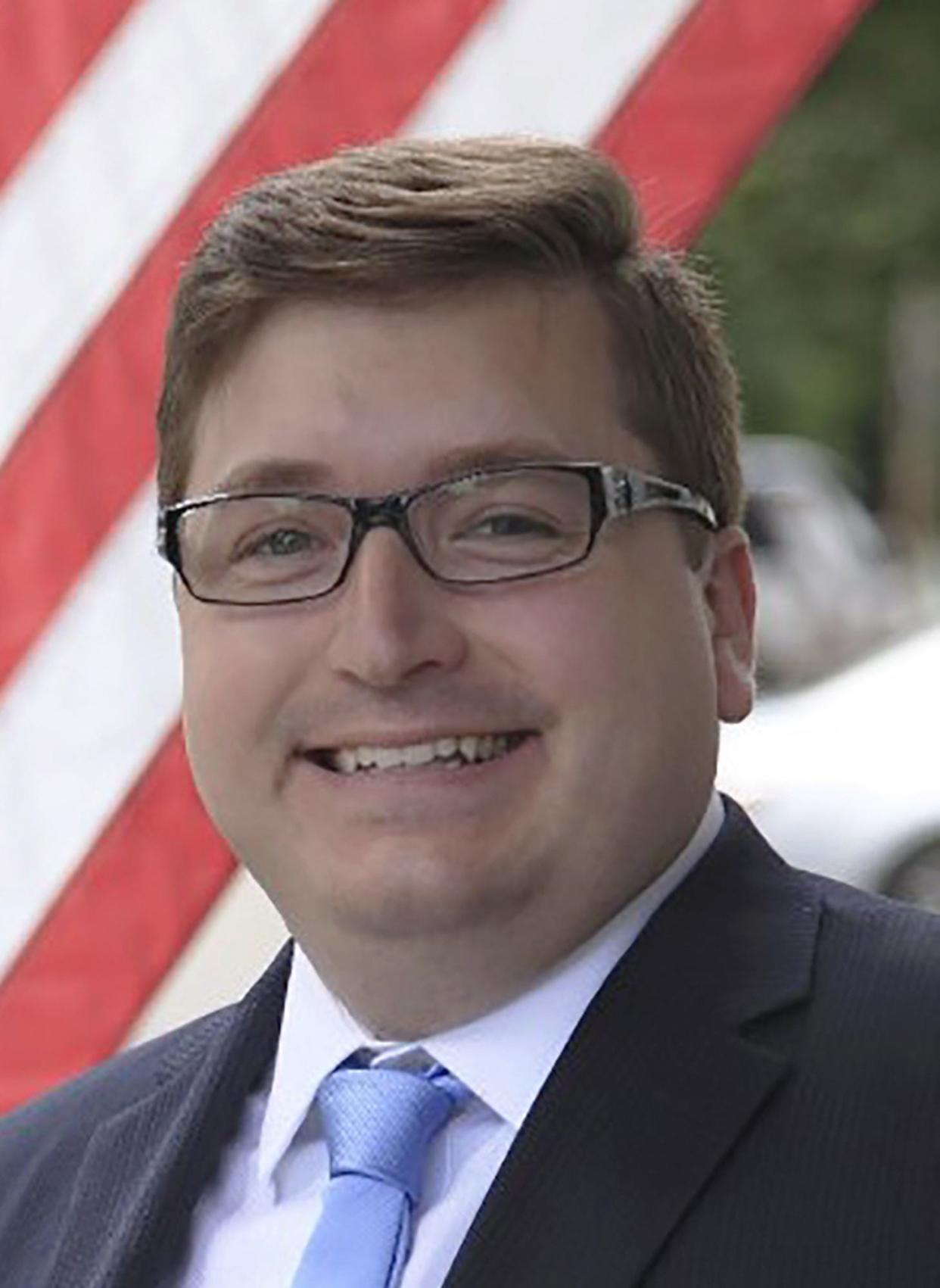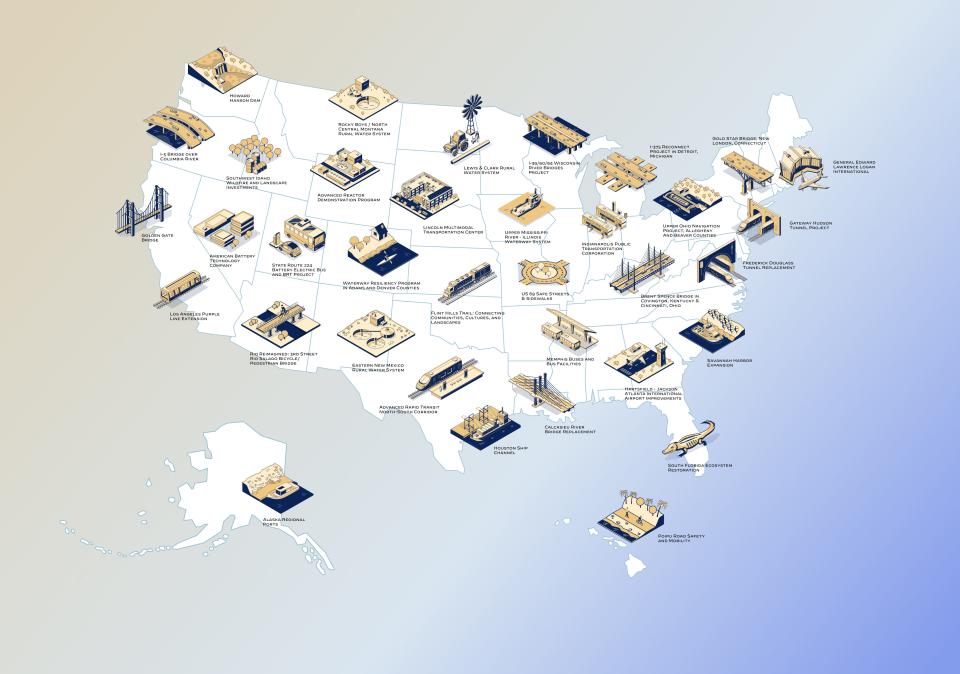Massachusetts contingent on its way to Washington to discuss infrastructure, investments

- Oops!Something went wrong.Please try again later.
A contingent of state and local politicians, leaders of community and trade organizations, housing and health care industries, among other civic and political leaders are scheduled to meet with President Joe Biden at the White House Wednesday to discuss the Communities in Action Building a Better America program and the massive federal investment in infrastructure.
Massachusetts is the 14th community to send representatives to the White House for the meetings that are hosted by the Office of Intergovernmental Affairs and Office of Public Engagement. Minnesota officials attended a March meeting.
State Rep. Jonathan Zlotnik, D-Gardner, who serves as the Vice Chair of the Joint Committee on Community Development and Small Business will be attending, as well as the city’s Mayor Michael Nicholson.
“I am proud to be able to represent the city of Gardner in Washington and give the Chair City a seat at the table on a national level,” Nicholson said, adding he is proud of the administration’s accomplishments in Gardner and looks forward to sharing the progress made with the President’s Office and the Cabinet.
“In my first inaugural address, I stated that by investing in ourselves, we set the example and give others a reason to invest back into our community,” Nicholson said. “I hope this shows that we’ve stayed true to that promise and will continue to keep that momentum going.”
Building trade representatives are excited about the Biden investment in infrastructure
Joe Byrne, the executive secretary-treasurer of the North Atlantic States Regional Council of Carpenters NNASRCC) is going.
The organization is excited about the federal investment in infrastructure, calling the federal commitment a shot in the arm for the building industry. It’s “a shot of confidence” at a time when economic uncertainty; inflation, supply-train issues, and possible recession, could make a career in the building trades more precarious.
“One thing that we value greatly is the dialogue that has been initiated by President Biden and his administration,” said Byrne in a statement prepared before his departure. “As representatives of blue collar workers, it means a lot to be asked questions and to have our opinions heard.”

Byrne represents roughly 30,000 carpenters, pile drivers, shop and millmen as well as flooring installers throughout New England and the portion of New York that does not include New York City and its five boroughs. NASRCC is the governing body of the United Brotherhood of Carpenters and Joiners of America (UBC), otherwise known as ‘the Carpenters Union.’
“We have a unique perspective on an industry that plays a crucial role in our local, state and national economy,” Byrne said. “The federal government is investing hundreds of billions of dollars in tangible projects that create jobs, but they’re doing it in a way that creates lasting change from both a top-down and bottom-up perspective.”
Building a better America: state by state, community by community
The Executive Office of the President has defined the event as “Communities in Action: Building a Better Massachusetts.” The meeting is part of a series that features local elected officials and community leaders working on behalf of their communities to create opportunities and improve people’s everyday lives.
At the meeting featuring the guests from Minnesota, participants heard from leaders of various federal departments, including veteran’s affairs, economic quality, the White House Infrastructure Coordinator, and the American Rescue Plan Act (ARPA) coordinator. Topics included the benefits of ARPA, the bipartisan infrastructure law and even the inflation reduction act, and the White House investment in science and semi-conductor production and technology.
The meetings, according to a White House release, offer the Biden-Harris Administration an opportunity to highlight its work with states and local governments, labor leaders, businesses, non-profits, education and health care leaders to leverage these historic investments to create and expand opportunities for working families.
The Bipartisan Infrastructure Law promises federal investments in rebuilding roads and bridges, replacing lead pipes and to bring high-speed internet to every family in America. The law also promises to deliver cheaper and cleaner energy to households and businesses and produce concrete results that change people’s lives for the better, according to the White House.
The administration has already announced the allocation of more than $200 billion for hundreds of projects. And more is on the way.
Millions to Massachusetts, and some for Worcester projects, too
Millions of dollars are already on their way to the Worcester area for dozens of projects: some smaller like $77,000 for the Birch Hill Dam or $110,000 for the Gardner Municipal Airport, others considerably larger; like $54 million for Pioneer Valley Transit Authority. (Find an interactive map here.)
Also included: $1 million for work on Interstate 290 from Shrewsbury to Boylston; $5.5 million for the Kenneth F. Burns Bridge over Lake Quinsigamond; $9.1 million for Route 2; $1.3 million for the Worcester Regional Airport and $756,000 for the Barre Falls Dam. Three other dam projects have been announced: $3.3 million for the Lester G. Ross Dam; $2.2 million for Tyler Dam; and $886,000 for the Rawson Hill Brook Dam.
In 2015, then-President Barack Obama created a similar program: the White House Council on Strong Cities, Strong Communities (SC2 Council) that gathered the expertise of federal department directors to coordinate efforts that focused on comprehensive technical assistance and policy recommendations for specific communities. Special attention was placed on strengthening local economies. The council also focused on streamlining federal resources and regulations and disseminating best practices.
This article originally appeared on Telegram & Gazette: Massachusetts' piece of the $200 billion infrastructure pie on agenda
